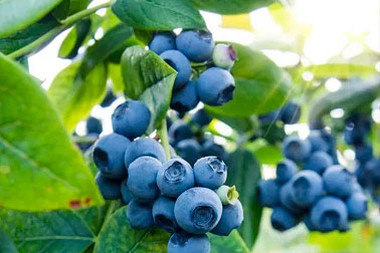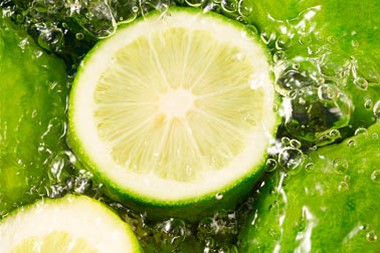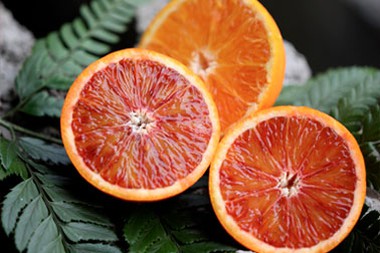Exploring the Potential of momordica powder in Diabetes Management
Introduction
In recent years, the prevalence of diabetes has surged globally, making it one of the most pressing health concerns. As researchers and medical professionals continue to seek effective ways to manage diabetes, alternative and traditional remedies have garnered attention. One such remedy is, derived from the bitter melon plant (Momordica charantia). This article aims to delve into the potential benefits of it diabetes management while adhering to Google's basic indexing and ranking guidelines.
Understanding Diabetes
Diabetes mellitus, commonly referred to as diabetes, is a chronic metabolic disorder characterized by elevated blood glucose levels. This occurs due to either inadequate insulin production or ineffective utilization of insulin by the body. Diabetes is associated with various complications, including cardiovascular diseases, neuropathy, and nephropathy, making its management crucial.
it An Overview
Momordica charantia, also known as bitter melon or bitter gourd, is a tropical and subtropical vine belonging to the Cucurbitaceae family. It is widely cultivated and utilized in various cuisines for its distinct bitter taste. Additionally, bitter melon has a history of use in traditional medicine systems, such as Ayurveda and Traditional Chinese Medicine (TCM), to manage diabetes and related conditions.
The active components of it include charantin, vicine, and polypeptide-p, all of which are believed to contribute to its potential antidiabetic effects. Charantin has been studied for its ability to lower blood glucose levels, while polypeptide-p is thought to enhance insulin sensitivity.
Evidentiary Support for Antidiabetic Effects
Numerous preclinical and clinical studies have investigated the potential of it in diabetes management. While findings are not entirely consistent, some studies suggest promising effects
1. Blood Glucose Regulation its active components may influence glucose metabolism, leading to improved blood sugar regulation. Some studies in animals have reported a reduction in fasting blood glucose levels and improved glucose tolerance.
2. Insulin Sensitivity Polypeptide-p in bitter melon has been associated with increased insulin sensitivity. This could potentially enhance the body's response to insulin and improve glucose uptake by cells.
3. Antioxidant Properties Bitter melon contains antioxidants that can help reduce oxidative stress, a contributing factor to diabetes-related complications.
4. Inflammation Modulation Chronic inflammation is linked to insulin resistance. Certain compounds in it may possess anti-inflammatory properties, which could indirectly benefit diabetes management.
Challenges and Considerations
While it shows promise as a complementary approach to diabetes management, several challenges and considerations must be acknowledged
1. Individual Responses Responses to it can vary widely among individuals. What works effectively for one person might not yield the same results for another.
2. Lack of Standardization Standardizing the content of active compounds in it poses challenges. Varying cultivation methods and plant sources can lead to inconsistent potency.
3. Interaction with Medications it could potentially interact with diabetes medications, affecting blood sugar levels. Individuals should consult healthcare professionals before incorporating it into their regimen.
Conclusion
it, derived from the bitter melon plant, has shown potential in diabetes management through its effects on blood glucose regulation, insulin sensitivity, antioxidants, and inflammation modulation. However, further rigorous research, including large-scale clinical trials, is warranted to establish its efficacy and safety. Individuals interested in utilizing it as part of their diabetes management strategy should do so under the guidance of healthcare professionals. As the field of alternative remedies for diabetes evolves, it remains a topic of interest and exploration.

How to Incorporate it into Your Diet
Introduction
it, derived from the bitter melon plant (Momordica charantia), has gained significant attention for its potential health benefits. This bitter-tasting powder is rich in various nutrients and bioactive compounds, making it a popular choice for those seeking to enhance their well-being. If you're wondering how to consume it effectively, this article will provide you with valuable insights and creative ideas to incorporate it into your diet.
1. Understanding it
it is obtained by drying and grinding the fruits of the bitter melon plant. It contains an array of essential nutrients such as vitamins (A, C, and B vitamins), minerals (potassium, magnesium, and calcium), antioxidants, and dietary fibers. Additionally, it is known for its potential to support digestion, manage blood sugar levels, and promote overall immune system health.
2. Simple Ways to Consume it
a. Momordica Smoothie
Blend a teaspoon of it with your favorite fruits, such as bananas, berries, and apples. Add a splash of yogurt or almond milk for a creamy texture. This smoothie not only masks the bitter taste of the powder but also provides a burst of nutrition.
b. Momordica-infused Tea
Infuse it in hot water to create a nourishing and revitalizing tea. You can enhance the flavor by adding a touch of honey or lemon. Sip this tea before or after meals for potential digestive benefits.
c. Momordica Seasoning
Sprinkle a pinch of it onto your salads, soups, or roasted vegetables. Its slightly bitter flavor can add depth and complexity to your dishes.
d. Momordica Yogurt Parfait
Layer momordica-infused yogurt with granola and fresh fruits to create a delicious and nutritious parfait. The contrasting textures and flavors make for an enjoyable eating experience.
3. Incorporating it into Recipes
a. Momordica Stir-fry
Add it to your stir-fry dishes, combining it with a medley of vegetables, lean protein, and your choice of sauce. The powder blends seamlessly, contributing its nutritional benefits to the meal.
b. Momordica Baked Goods
Experiment by incorporating it into muffins, pancakes, or bread recipes. Its bitterness can balance the sweetness, resulting in unique and wholesome treats.
c. Momordica Salad Dressing
Whisk it into a homemade vinaigrette using olive oil, vinegar, and your preferred seasonings. Drizzle this dressing over salads to elevate both taste and nutrition.
4. Recommended Daily Intake
The appropriate daily intake of it may vary depending on individual preferences and health conditions. However, starting with half a teaspoon per day and gradually increasing the amount can help your palate adjust to the bitterness. Consulting a healthcare professional or a registered dietitian is advisable, especially if you have underlying health concerns.
5. Tips for Buying and Storing it
When purchasing it, opt for reputable brands known for their quality products. Look for organic and non-GMO certifications, which indicate a higher level of purity. Store the powder in an airtight container, away from direct sunlight and moisture, to maintain its freshness and potency.
Conclusion
Incorporating it into your diet can be a rewarding journey toward improved health and wellness. Its unique bitter taste may require some creative culinary experimentation, but the potential benefits are well worth the effort. From smoothies to savory dishes, it offers a diverse range of consumption options. Remember to start with small amounts and gradually increase your intake, and always consult a healthcare professional before making significant changes to your diet. By exploring different ways to enjoy it, you can embark on a path to a more vibrant and nourished lifestyle.
What is another name for Momordica?
Introduction
In the realm of botanical wonders, Momordica holds a place of significance. Known by various names across cultures and languages, this intriguing plant has earned recognition not only for its culinary uses but also for its potential health benefits. While it might not be as ubiquitous a term as "apple" or "banana," Momordica has its own distinct charm and importance in the world of plants. In this article, we will delve into the diverse names and fascinating attributes associated with Momordica.
The Botanical Wonder Momordica
Momordica, a genus of flowering plants in the gourd family Cucurbitaceae, is a versatile and intriguing botanical entity. These plants are known for their distinctive appearance, often characterized by intricate patterns on their fruit and leaves. Native to various regions of the world, including Asia, Africa, and the Americas, Momordica plants have found their way into the hearts and cultures of many communities.
Unveiling the Many Names
The journey into the world of Momordica starts with its alternative names. Depending on the region and language, this plant goes by a plethora of names that reflect its unique characteristics and uses. One common name that resonates in many cultures is "bitter melon." The name perfectly encapsulates one of the plant's defining features - its distinct bitterness. "Bitter gourd" is another moniker used in various English-speaking countries, emphasizing the plant's gourd-like appearance.
In India, Momordica charantia, a well-known species within the Momordica genus, is often referred to as "karela" in Hindi. The name "karela" is synonymous with the bitter taste that characterizes the vegetable and is a staple in Indian cuisine. Similarly, in China, the plant is known as "ku gua," further emphasizing its bitter flavor.
In Latin America, particularly in Mexico, Momordica charantia is referred to as "balsamina" or "calabacita amarga." These names also underscore the plant's unique qualities, associating it with bitterness and distinctive physical features.
Culinary and Medicinal Significance
Momordica's journey doesn't stop at its name; it extends to its applications in the culinary and medicinal realms. Despite its bitter taste, bitter melon is celebrated in various cuisines for its nutritional value and potential health benefits. Its presence in traditional dishes is a testament to its cultural importance.
The bitterness of Momordica is not a drawback but rather a unique attribute that sets it apart. Bitter melon is often used in curries, stir-fries, and soups, where its flavor profile adds complexity to dishes. Its versatility extends to its consumption in various forms, such as pickles and teas, in different parts of the world.
Beyond the culinary domain, Momordica has been a subject of interest in traditional medicine systems. It has been used for centuries in Ayurveda, Traditional Chinese Medicine, and other holistic practices. The plant is believed to possess potential benefits ranging from blood sugar regulation to immune system support. However, it's important to note that while Momordica shows promise, scientific research is ongoing to validate these traditional claims.
Cultural Significance and Symbolism
Momordica's diverse names and applications have also granted it cultural significance. In many societies, the plant's bitter taste has become symbolic of endurance and the ability to transform challenges into opportunities. This symbolism is often reflected in folklore, where bitter melon is used as a metaphor for life's trials and the strength to overcome them.
In some cultures, the bitterness of Momordica is associated with its ability to cleanse and detoxify the body. This has led to its inclusion in cleansing rituals and practices, further highlighting its importance beyond its physical attributes.
Conclusion
From "bitter melon" to "karela," and from culinary delights to potential health benefits, Momordica's journey is one of complexity and diversity. Its many names across cultures reflect its multifaceted nature, while its uses in cooking and traditional medicine highlight its significance in our lives. As we continue to explore the botanical wonders of the world, Momordica stands as a testament to the interconnectedness of nature, culture, and human well-being.
please contact us at email: selina@ciybio.com.cn



